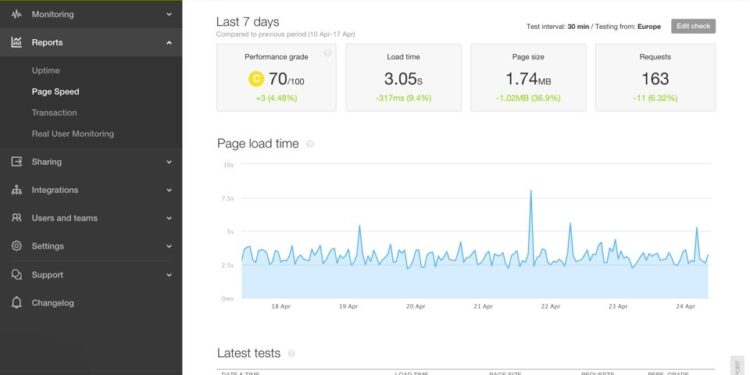Web performance monitoring is an essential process to ensure your site or app is working well and that your end users are having the best experience possible. The user experience is key to your success, as a system that is unreliable, slow, or erratic will drive customers away in droves. Likewise, the design and navigation of your site should lead clients or customers effortlessly to their (and your) desired outcome. Performance and sales of your service or product can be analyzed using timely and accurate data, allowing you to take evidenced based business decisions. So, what’s the best way to get the most out of web performance monitoring?
Application Performance Monitoring
The very first thing you should consider in terms of web performance monitoring is Application Performance Monitoring (APM). These tools give businesses timely and accurate data on sites and apps, allowing a deeper understanding of how effectively they are working. Your solutions should encompass server and infrastructure monitoring, not just the application metrics, as a comprehensive solution will identify issues and patterns across your delivery systems. The whole is only as strong as the sum of its parts.
Choosing Your Metrics
Most products have an in-built menu of metrics they monitor, but you may want some custom designed ones for your particular set up. It could be that you want to focus on some specific aspect of transaction monitoring or you want to compare and contrast different sets of metrics in one go. Make sure that the tool you purchase has the capability to do this.
Timely and Accurate Data
It’s important to be able to monitor the data in real time, and this can be what sets your business apart from your competitors. Think of it as a diagnostic tool, monitoring the vital statistics of your site, app or network, allowing you to fine tune them for optimum performance. Having real time data means you can act fast and effectively to minimize any disruption in performance. There are specific tools that offer this feature, and in the long run, this can save you a lot of time and money.
Employ an Alert System
With any tool that you choose, you should be able to define upper and lower limits for your metrics. It’s crucial to have a tool that can alert you if these have been breached so that you can remedy them fast, if required. Having a system of notifications allows engineers to decide what actions need to be taken and also inform other stakeholders about the performance of the site or app.
Document Your Data
Adhere to IT best practices by documenting your application performance evaluating processes as they happen. In the ever-shifting world of IT, code can be changed daily in order to address problems as they occur. It can be easy to lose track of changes to system configurations, specific metrics and so on, so ensure your team update any changes in the records. It’s basic housekeeping, but an essential step in keeping records consistent and up to date.






